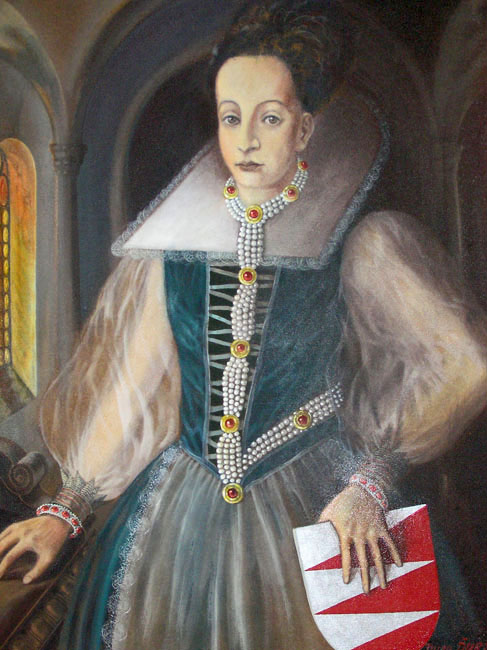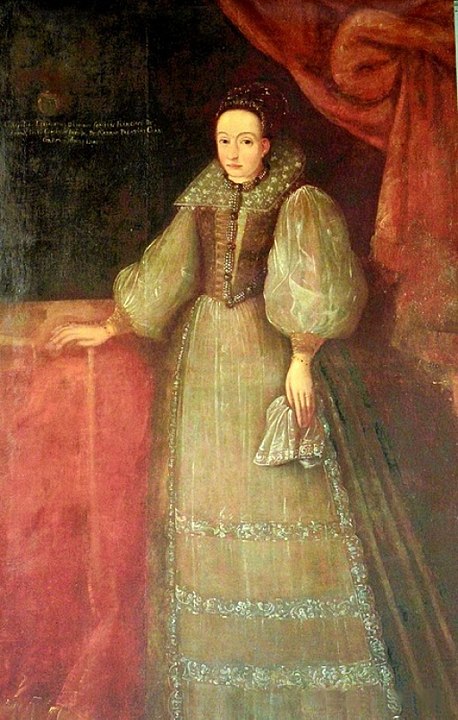The life of the infamous Dracula Countess
- cozyandspirit

- Feb 24, 2020
- 4 min read
Updated: Jan 22, 2022

Báthory Erzsébet divides historians until these days and it’s controversial whether it’s about a bloodthirsty, torment rejoicing, sickly chasing belle missus or just about an innocent woman, who has been accused due to political reasons by forged charges, thus doomed to cruel suffering in her final 4 years.
Báthory Erzsébet was born on 7. August 1560. in a noble family. She spent her childhood in the castle of Ecsed, with Nádasdy Ferenc earl, who was older by 5 years and they engaged when she was 11 and married in 1557, Nádasdy Ferenc gifted the castle of Csejte and the 12 villages nearby to his wife as a dowry. Erzsébet first ended up in Sárvár, where the Nádasdy family had a castle, soon they moved to the castle of Csejte in the western part of Slovakia, 6 children born from their marriage. Nádasdy Ferenc was busy with the battles fought with the Osman Empire. Meanwhile, Erzsébet spent a lot of time by herself, dealt with parenting, she was distant and lonely.
Source: Wikimedia Commons
In the autumn of 1653, Nádasdy Ferenc came home ill to Sárvár after the battle fought around Buda, and in 1654 he died unexpectedly. Thereafter, Erzsébet lived as a lonely widow.
A determined, strong, Calvinistic woman provoked the hate of many.
First, a protestant preacher, the court priest and camp pastor of Nádasdy Ferenc started to distribute rumours, that the mistress of Csejte deals with occultist science and performs vicious practices.
Erzsébet’s figure was surrounded by a dark haze, even while her husband was alive. They spread rumours, that she maintained her beauty with mysterious, supernatural powers and didn’t frighten from tormenting innocent servants. Today in the public awareness she is known mostly because of her supposed practices to stop ageing with breaking all the mirrors in the castle to prevent seeing herself ageing. According to the contemporary descriptions Erzsébet cared a lot about her beauty maniacally and dreaded from finding any signs of ageing on herself. And if this wouldn’t be enough, according to the rumours in addition to her obsession with beauty she didn’t reluctant from the cruellest tools of sadism to live out her sexual desires.
Allegedly, once she hit a servant so hard, who was combing her hair, that she pulled it accidentally, and her blood spilt onto the hand of Erzsébet. She saw so that, her skin became whiter and she embellished from it. Seeking blindly for the secret of youth she killed the girl and bathed in her blood. Later on, she used such virgins blood, whom she found best for this purpose. Gathered them on her land, whipped, truncated, tormented them and took their blood hanging them by the foot.
These scuttlebutts are clearly refuted by the biological facts because it’s impossible – due to its coagulation – to bath in human blood unless they use some type of blood anticoagulant. Nevertheless, this story stays unabated in the imagination of many, people have always loved to make up stories to historical figures, which not only splashing from blood, but the more terrifying and horror, the more interesting and mystical the otherwise flat events turn.
Thus happened, that according to many, Erzsébet allegedly drank from the maid’s blood, initially from a golden goblet, later directly from their body. After she ran out of the girls living in the neighbourhood, she established a woman school with her woman lover and killed the girls sent there with a similar method. According to the story, before she was captured she killed more than six hundred girls.
It’s important to note that the first charges were said after the arrest of Báthory Erzsébet and even then from such inner servants, who were forced with torture to “come around”– namely back then torture was the most used interrogation method, even when, the witness was willing to cooperate.
Báthory Erzsébet was arrested in December of 1619 by Thurzó György palatine, who visited her surprisingly. According to the prosecution they found many bodies of girls, injured and buried in the court of the castle of Csejte.
They prosecuted the quietly living woman, during which as the result of torture her servants and maids admitted culpability. Their fate became beheading a week later. Their bodies had been burned. The countess wasn’t sued orderly nor had a trial, despite II. Mátyás , Hungarian king asked the palatine multiple times.
In January 1611. Thurzó reported to II. Mátyás in his letter, that they captured Erzsébet and locked her into the castle of csejte. The Turk defeater Nádasdy Ferenc’s left alone widow was detained for the rest of her life in the castle of csejte and died there at the age of 54. According to the statement of Thurzó György, Báthory Erzsébet was locked into a bricked room where she got food and drink through a gap.
The pre-trial detention ended upon her death four years later. We can call it a conceptual trial because there wasn’t an actual trial and judgement wasn’t issued.
The history of science looks at Erzsébet as she wasn’t crueller than any other aristocratic widows of her historical age, and later researchers came to a conclusion, that the prosecution against Báthory Erzsébet was conceptual.
Which is really tragic in her story, that the misconceptions of her figure still exist. They made her such a mass killer, who has got into the Guinness records based on her victims.
The story inspired many screenwriters and directors, from which one of the creation is the movie called Bathory, in which the protagonist is a tame, daydreaming woman who though sometimes goes haywire – from the lack of her battling husband, Nádasdy Ferenc and sometimes from her husband’s brutality – but fundamentally she is a decent woman, who is a certified knower of herbs beneficial power. The story gets spiced up from a love story, according to which Erzsébet had affairs with an Italian painter, when her husband wasn’t home.
The Castle of Csejte

The picturesque castle ruin stands on a barren height, offers a wonderful panorama to the visitors. You can wonder about the allegedly sadistic deeds of Báthory Erzsébet walking between the beautifully renovated ruins. From the former castle, the 10-15 meters height walls remained, in the process of reconstruction some walls even had rebuilt. From the three remaining towers, one fell in the ‘80s, from the remaining two towers, Báthory Erzsébet died in the southern residential tower, with a little imagination we can even see the bricked window of her cell.
Csejte offers an alternate relaxation opportunity with the Draskovics castle, in its museum, you can find an exhibition of personal items of Báthory Erzsébet – including the reproductions of the clothes, she wore.









Comments